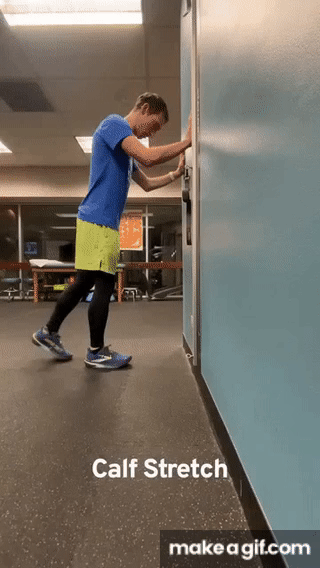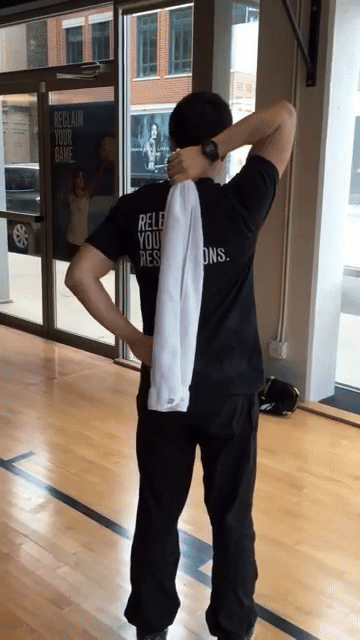Heel pain is a common condition that can significantly impact daily life, affecting millions of Americans every year. Whether caused by plantar fasciitis, Achilles tendinitis, or general overuse, the right heel pain exercises can make a significant difference. This guide provides medically-backed stretches and movements to relieve pain, improve flexibility, and prevent future flare-ups.
What Causes Heel Pain exercises?
Heel pain exercises is a common condition that can affect anyone, from athletes to people who spend long hours standing. It often develops gradually and is frequently due to repetitive stress or structural imbalances in the foot.
Common Causes Include:
Plantar fasciitis is the primary cause, responsible for the majority of heel pain cases. It occurs when the plantar fascia, a thick ligament running along the bottom of the foot, becomes inflamed due to overuse or tight calf muscles. Pain is typically worst in the morning.
- Achilles Tendinitis – Caused by excessive or repetitive strain on the Achilles tendon, which connects your calf muscles to your heel bone. It can cause pain and stiffness in the back of the heel, especially after activity.
- Heel Spurs – These are bony projections that develop on the underside of the heel bone. While not always painful, they often occur alongside plantar fasciitis and can contribute to discomfort.
- Excessive Pronation – This biomechanical issue involves the foot rolling inward too much when walking or running. Over time, this adds increased pressure on the heel and stresses the plantar fascia, leading to pain and inflammation.
- Obesity or Sudden Weight Gain – Extra body weight increases the load on your heels, accelerating wear and tear on foot structures.
- Improper Footwear – Wearing unsupportive shoes, especially on hard surfaces, can lead to or worsen heel pain.
Key Statistic:
Over time, this increased strain can overload the heel and plantar fascia, leading to discomfort and inflammation.
According to the American Academy of Orthopaedic Surgeons, approximately 1 in 10 individuals will experience heel pain during their lifetime.
How Do Heel Pain Exercises Help?
Specific stretches and strengthening exercises provide both immediate relief and long-term recovery by addressing the root causes of heel pain. By addressing the root causes—like tight muscles, weak foot structures, or poor alignment—these exercises play a critical role in rehabilitation.
Benefits of Heel Pain Exercises:
- Reduce Morning Stiffness: Gentle stretching upon waking loosens tight tissues and prepares the foot for daily movement.
- Improve Foot Alignment: Proper stretches help rebalance the muscles and ligaments, promoting better posture and walking mechanics.
- Boost Blood Flow: Movement increases circulation, which supports healing and reduces inflammation.
- Strengthen Muscles: Stronger foot and lower leg muscles provide better support and help offload pressure from the heel.
- Prevent Re-injury: Regular stretching maintains tissue elasticity and resilience, making future injuries less likely.
“Stretching the plantar fascia and Achilles tendon regularly reduces heel pain significantly and speeds up recovery.”
— Dr. Alicia Jones, DPT, Harvard Health Affiliate
Best Heel Pain Exercises (With Instructions)
1. Plantar Fascia Stretch

Best for: Morning heel pain
This simple stretch targets the plantar fascia — the thick band of tissue that runs along the bottom of your foot and is a common source of heel pain.
How to do it:
- Sit on a sturdy chair and cross the affected foot over the opposite knee.
- Using your hand, gently pull your toes back toward your shin until you feel a firm stretch in the arch of your foot.
- Hold this position for 15–30 seconds.
- Repeat 3 times per session, and aim for two sessions daily — especially before getting out of bed and before bedtime.
Why it helps: This stretch improves flexibility in the arch and reduces morning pain associated with plantar fasciitis.
2. Calf Stretch (Wall Stretch)

Best for: Tight calf muscles
Tight calf muscles can increase tension on the plantar fascia, worsening heel pain.
Instructions:
- Stand facing a wall, placing your hands on the wall at shoulder height.
- Step one foot back, keeping that leg straight and the heel firmly on the floor.
- Slowly bend your front knee and lean forward until you feel a gentle stretch in the calf of your back leg.
- Hold for 30 seconds.
- Switch legs and repeat.
- Perform 3 repetitions per leg.
Pro Tip: Keep your hips square and your back straight to maximize the effectiveness.
3. Towel Stretch

Best for: Morning stiffness relief
Great for loosening up the heel area after long periods of rest.
Steps:
- Sit on the floor with your legs stretched out straight in front of you.
- Loop a towel, resistance band, or yoga strap around the ball of your foot.
- Keep your knee straight as you pull the towel towards you until a stretch is felt along your arch and calf.
- Hold for 30 seconds and repeat 3 times on each foot.
Why it’s beneficial: Ideal before your first steps in the morning or after sitting for a long time.
4. Heel Raise (Calf Strengthening)
Best for: Strengthening Achilles tendon
This exercise builds strength in the calf and Achilles area to better support your heel.
Directions:
- Stand on a step or a raised platform with your heels hanging off the edge.
- Rise onto your toes slowly, then lower your heels below the step level in a controlled motion.
- Perform 2 sets of 10 repetitions, resting for 30 seconds between sets.
Note: Use a wall or railing for balance if needed.
5. Foot Roll with Ball
Best for: Releasing plantar fascia tension
This massage-like exercise reduces inflammation and increases circulation.
What you need: A tennis ball, golf ball, or frozen water bottle.
Instructions:
- Sit in a comfortable chair and place the ball under the arch of your foot.
- Gently roll it from the heel to the toes for 2–3 minutes.
- Apply moderate pressure and focus on sore spots.
- Repeat on the other foot if needed.
Bonus Tip: Use a frozen water bottle to reduce inflammation while massaging.
6. Seated Towel Curl
Best for: Strengthening foot muscles
A great way to build intrinsic foot strength, which improves arch support and reduces heel strain.
How to do it:
- Sit comfortably on a chair and lay a small towel flat on the floor in front of your feet.
- Using only your toes, scrunch the towel toward you.
- Straighten the towel and repeat for 2 sets of 10 repetitions per foot.
Progression Tip: Add a small weight (like a can) on the end of the towel for added resistance as you get stronger.
Tips for Safe and Effective Heel Stretches
To get the most from these heel stretches for heel pain exercises, follow these tips:
- Warm up before stretching
- Breathe deeply during each stretch
- Avoid bouncing or jerking motions
- Wear supportive footwear throughout the day
Important: If your pain persists longer than two weeks, consult a healthcare provider.
Legal & Medical Consideration
These exercises are for general guidance and should not replace professional medical advice. Always consult your doctor, podiatrist, or physical therapist before starting any new treatment or exercise plan, especially if your heel pain is persistent, worsening, or interfering with daily activities. Heel pain may sometimes indicate more serious underlying conditions such as nerve entrapment, stress fractures, or systemic inflammation that require accurate diagnosis and specific care.
Attempting to self-treat without proper evaluation may delay recovery or cause further complications. For official health guidance and evidence-based recommendations, visit reputable sources such as the National Institutes of Health (NIH) or Harvard Health.
Frequently Asked Questions (FAQ)
What is the fastest way to relieve heel pain?
Start with foot rolling, towel stretches, and calf stretches. Ice the heel and use arch-supporting shoes.
How often should I do heel exercises for pain relief?
Ideally, perform stretching exercises twice daily, especially in the morning and before bedtime.
Are heel pain exercises safe during pregnancy?
Yes, but it’s important to consult your OB-GYN or a physical therapist before beginning any new exercise routine, especially during pregnancy.
Can stretching exercises cure plantar fasciitis?
Stretching won’t cure it overnight but can significantly reduce pain and prevent recurrence with consistent practice.
Conclusion: Walk Away from Heel Pain exercises
Daily heel pain exercises offer a non-invasive, low-cost solution to an issue that affects mobility and quality of life. Incorporate these routines into your day, wear proper footwear, and stay consistent for noticeable improvement.
If your symptoms persist, don’t hesitate to reach out to a podiatrist or physical therapist.
Take the first step to pain-free living start your heel stretches today!







